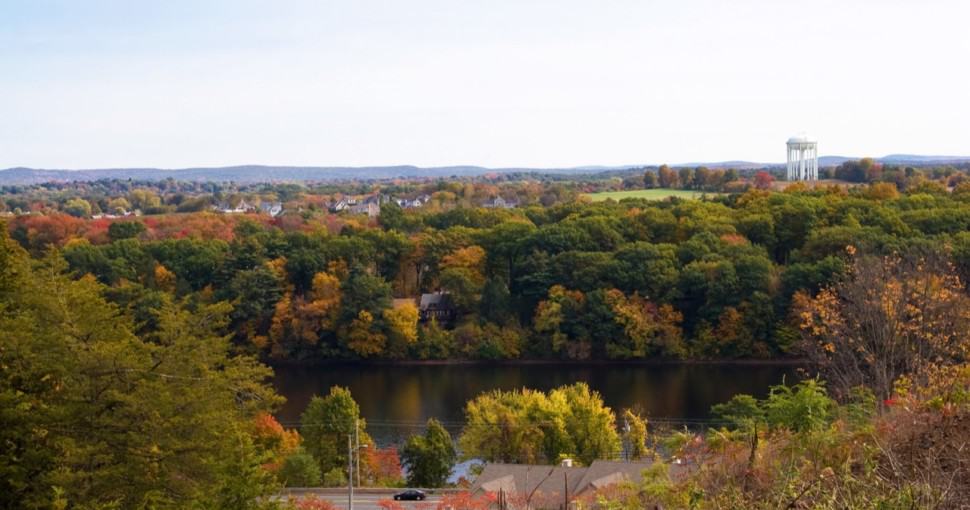The diverse ecosystems in Massachusetts include lakes, rivers, swamps, valleys, mountains, and hundreds of miles of forests, offering a variety of experiences for any nature lover. The forests cover over 60% of the state and are abundant with species ranging from oak-hardwood and birch trees to the Eastern White Pine and Hemlock tree.
Contents
- 1. American Elm (Ulmus americana)
- 2. Eastern White Pine (Pinus strobus)
- 3. Red Maple (Acer rubrum)
- 4. Northern Red Oak (Quercus rubra)
- 5. Eastern Hemlock (Tsuga canadensis)
- 6. Black Oak (Quercus velutina)
- 7. White Ash (Fraxinus americana)
- 8. Sweet Birch Tree (Betula lenta)
- 9. Tamarack (Larix laricina)
- 10. Black Spruce (Picea mariana)
- 11. Northern Whitecedar (Thuja occidentalis)
- 12. Sassafras (Sassafras albidum)
- 13. Tulip Tree (Liriodendron tulipifera)
- 14. Umbrella Magnolia (Magnolia tripetala)
- 15. Katsura Tree (Cercidiphyllum)
- 16. American Sycamore (Platanus occidentalis)
- 17. Witch hazel (Hamamelis virginiana)
In addition to unique or endangered species, the 100,000 acres set aside in Massachusetts’ 34 forests contain old-growth forests that are thought to be over 400 years old. Some of the forests are not only old, but they also contain some incredibly tall trees. Certain towns towards the western region of the state have a forest cover of approximately 90%.
Massachusetts has a humid continental climate, with hot and humid summers and cold and snowy winters, as well as plenty of rainfall. Climate change is already having an impact on Massachusetts’ woodlands: more extreme weather patterns destroy trees, and a warmer climate renders forests more prone to invasive parasites such as the gypsy moth.
Private landowners hold around 65% of Massachusetts’ woodlands. The majority of these private woods are owned by individuals and families and are generally known as family forest ownerships. This group owns 47% of the Commonwealth’s forest area.
With approximately 82 species discovered in these forests, the Eastern White Pine and Red Maple are the most abundant in terms of total volume and number of trees, respectively. In this post, we have narrowed down 17 of the most common trees in Massachusetts. Let’s discuss each of them in detail.
1. American Elm (Ulmus americana)
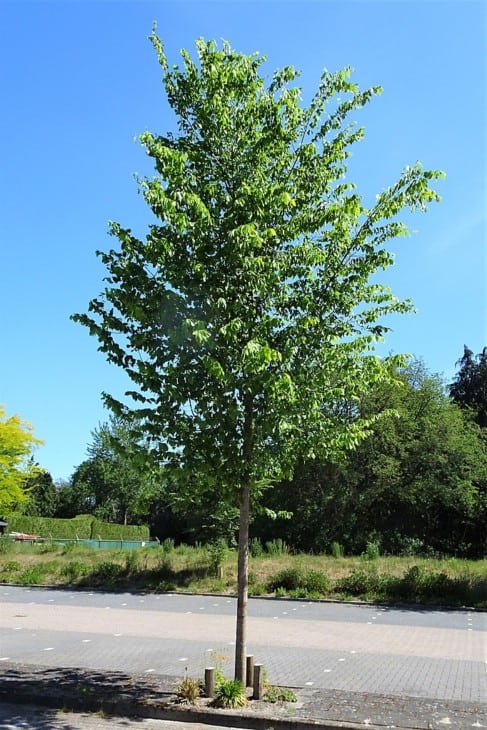
The American Elm is a huge, towering deciduous tree native to the eastern two-thirds of North America. It is Massachusetts and North Dakota’s state tree. American Elms are fast-growing trees that can reach 50 feet in 20 years. The broad, glossy, double-toothed foliage changes color from yellowish to dark green as they develop. The bark is greyish and heavily furrowed, with a flaky texture.
2. Eastern White Pine (Pinus strobus)
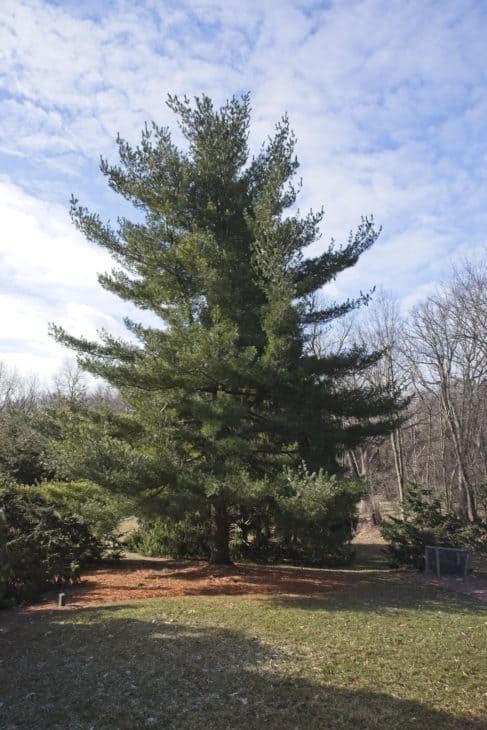
Native to North America, this tree occurs from Newfoundland all the way to Manitoba, Minnesota, Georgia, and Mississippi. It is a hardy, valuable tree with soft clustered blue-green needles. It can grow up to 50 to 80 feet and is suited to moist, well-drained soils. It is widely used as a Christmas tree due to its oval, pyramidal growth.
3. Red Maple (Acer rubrum)
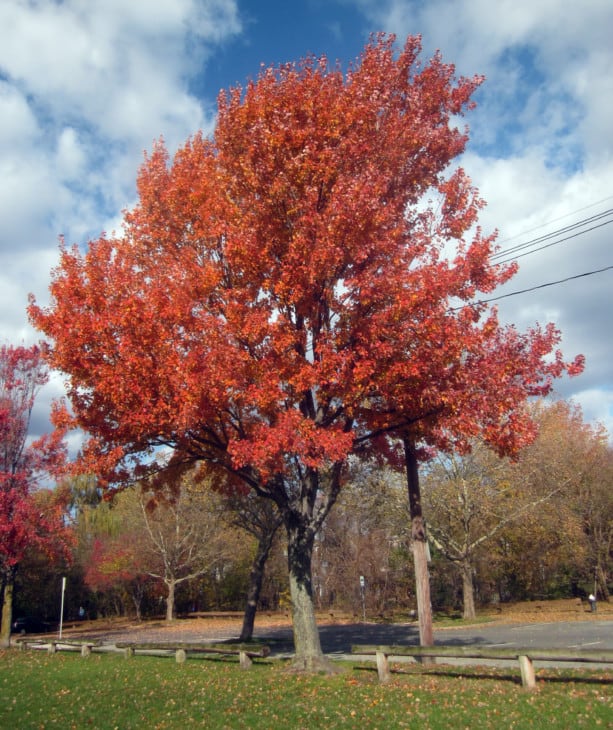
Red Maple is a deciduous tree native to North America that develops to be between 40 and 70 feet tall but can reach heights of greater than 100 feet. With maturity, the shape of red maple becomes somewhat rounded or oval. The Red Maple is one of the first trees to turn color, with hues ranging from greenish-yellow to vivid red to scarlet.
4. Northern Red Oak (Quercus rubra)
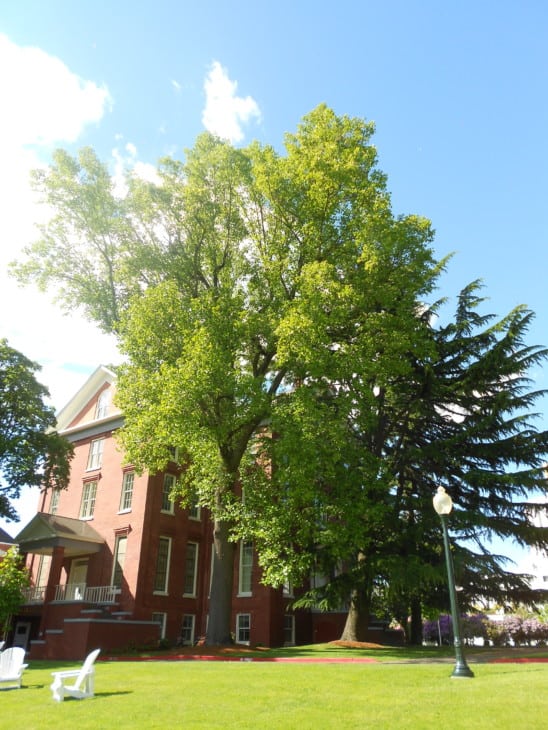
These trees grow straight and tall in woods, reaching up to 100 feet, and occasionally, 140 feet. The leaves are dark green in the summer and turn a beautiful scarlet or brown in the fall. Between rougher ridges, its bark looks to have uneven shining stripes that mimic downhill ski trails striping a distant slope. It is prevalent in northeastern states such as D.C., Massachusetts, Georgia, and more.
5. Eastern Hemlock (Tsuga canadensis)
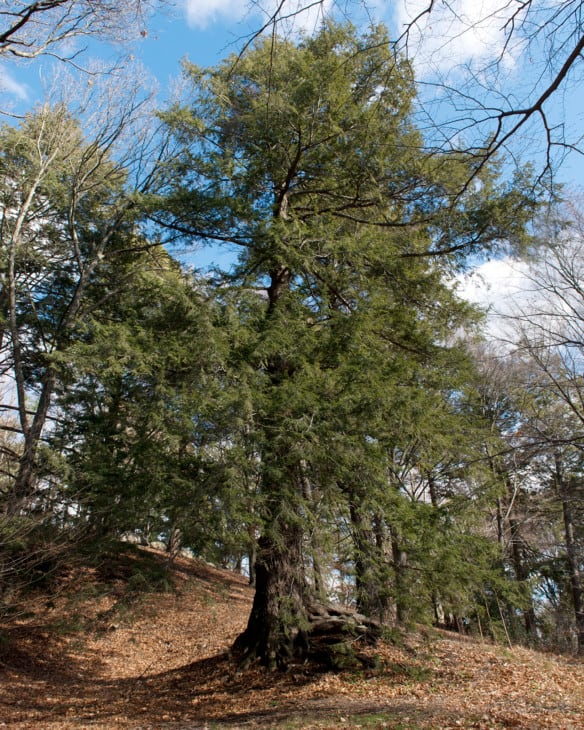
Since Eastern Hemlock is an evergreen conifer, its needles stay green all year. It has two parallel white lines along the bottom of its short, glossy, dark green needles. Hemlock bark matures to a reddish-brown color with wide, flattened ridges. It grows up to 60 to 70 feet tall and is found throughout the Mid-Atlantic States all the way south to Georgia and Alabama.
6. Black Oak (Quercus velutina)
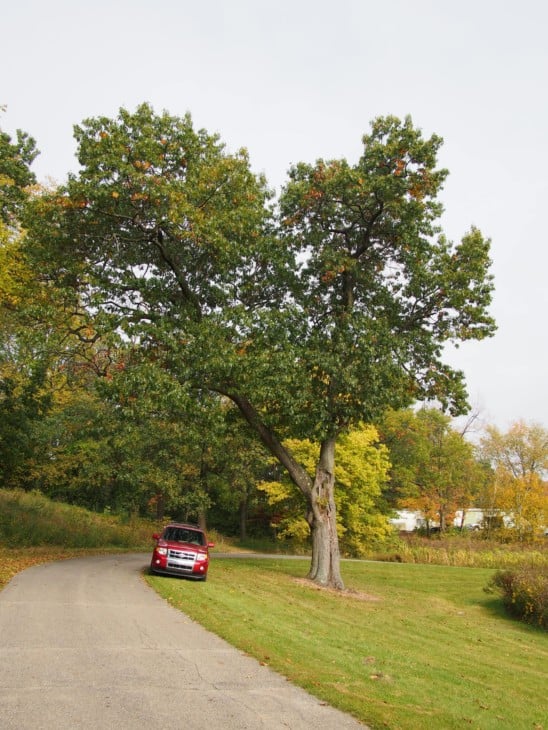
Younger Black Oak trees have grey, smooth bark, however, older trees have darker bark that is rough and ridged. The tree has a broad crown of branches and can grow to be 50-80 feet tall. The tops of the leaves are a gleaming green, while the undersides are lighter and include a few tiny hairs. Its native range extends from Ontario to Florida, and from Maine to Texas.
7. White Ash (Fraxinus americana)
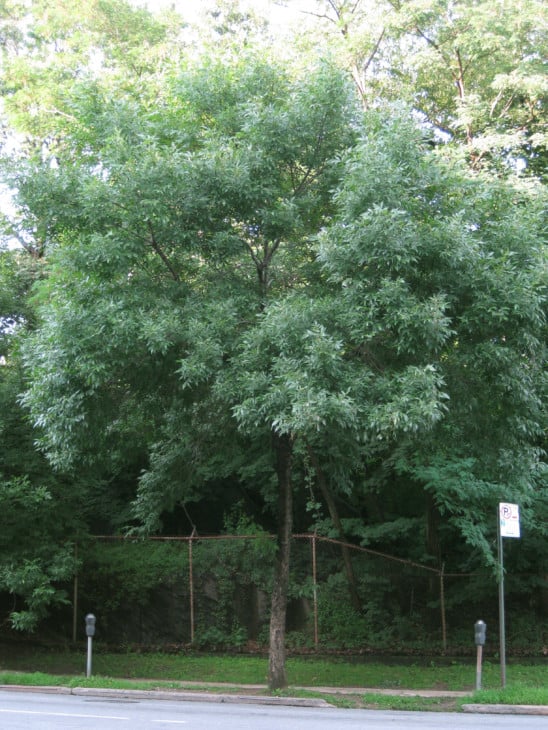
The White Ash is native to North Carolina but is also common in Massachusetts. It normally reaches a height of 60 to 90 feet. The bark is yellow-brown to light grey, with deep furrows separating short, sharp ridges. In the spring, tiny, light green to purple blooms with no petals develop in loose stalks.
8. Sweet Birch Tree (Betula lenta)
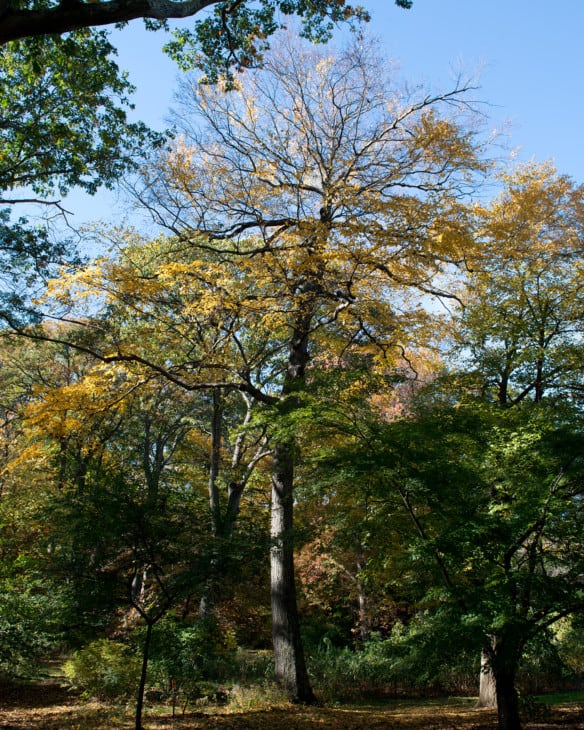
The Sweet Birch is a species native to eastern North America, ranging from southern Maine to southern Ontario, and from the Appalachian Mountains to Georgia. It is most abundant in Massachusetts, Connecticut, New York, and Pennsylvania, according to forest survey data The wood darkens to a mahogany-like tone when exposed to the air. Medium-sized trees can reach heights of 50 to 60 feet, with some reaching 80 feet.
9. Tamarack (Larix laricina)
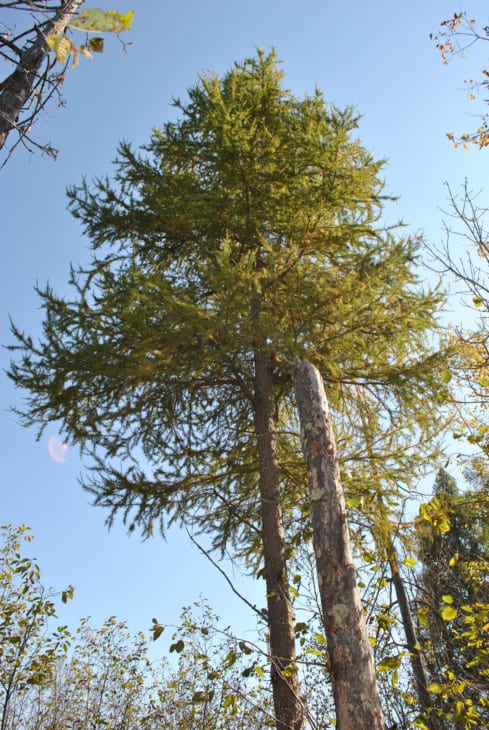
This tall spire-like coniferous tree favors very moist areas and sandy soils and features deciduous needles that emerge bright green in the spring and turn a magnificent gold in the fall. Tamarack can reach a height of 50 feet tall with a spread of 20 feet. Since it is sensitive to urban pollutants, it is better avoided in the metropolis or along roadways.
10. Black Spruce (Picea mariana)
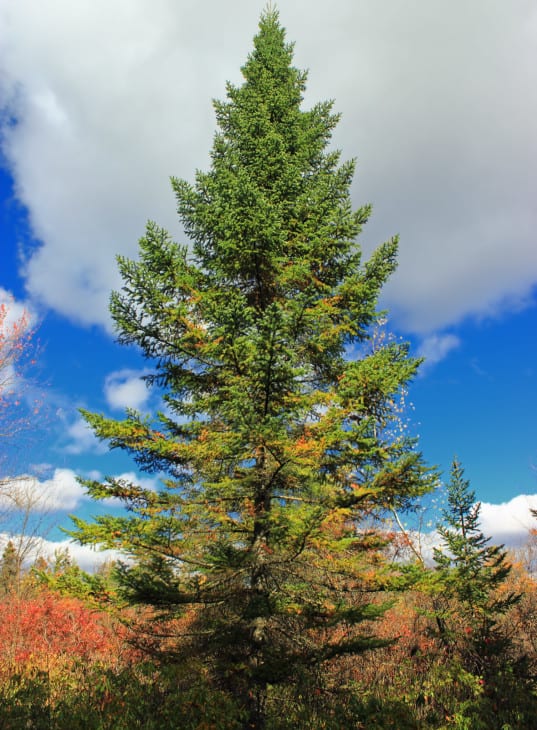
Black Spruce is commonly found in northern Massachusetts, Labrador, and west across Canada to Alaska. Isolated patches can be found in western Connecticut, northern New Jersey, Pennsylvania, southern Wisconsin, southern Michigan, southern Manitoba, southern Minnesota, and more. It grows up to 40 to 60 feet, with grayish-brown bark, and needle-like, dark bluish-green leaves.
11. Northern Whitecedar (Thuja occidentalis)
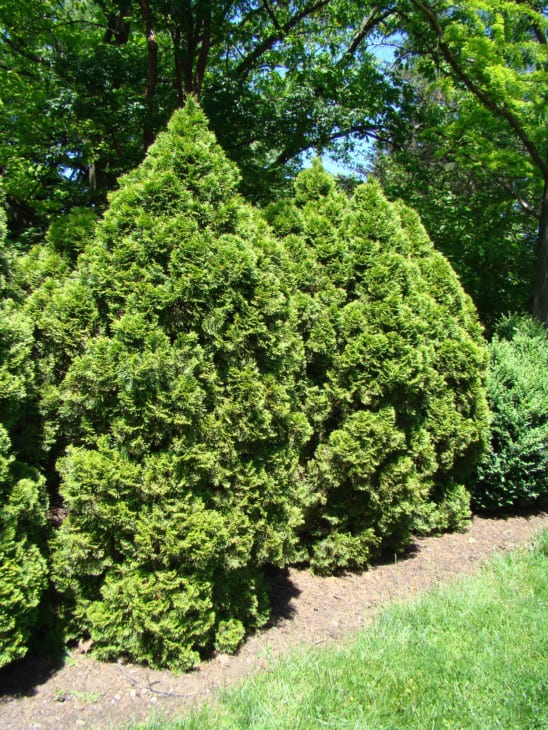
This species is a widely grown ornamental plant native to eastern Canada and most of the north, central, and the upper Northeastern United States. The bark is thin and varies in color from grey to reddish-brown, and divides into vertical, long, narrow scaly pieces. Northern Whitecedars can reach a height of 40 to 70 feet. The roots are shallow and widespread, frequently protruding above the ground.
12. Sassafras (Sassafras albidum)
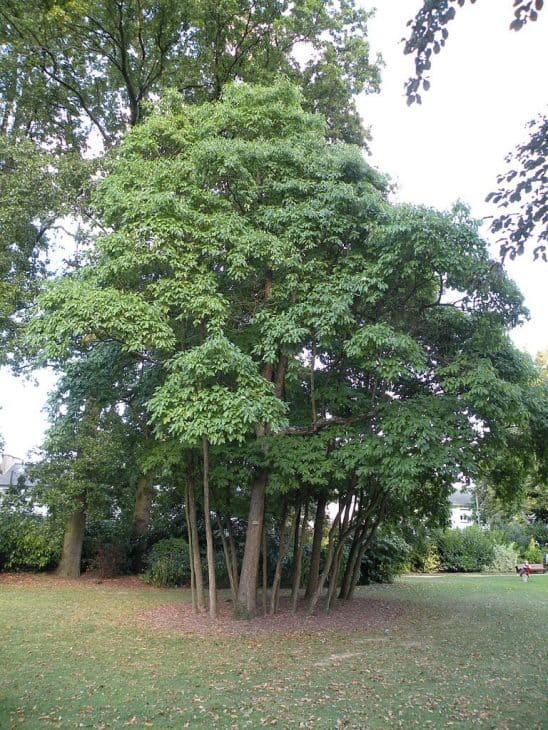
Sassafras is a deciduous tree with an appealing horizontal-branching arrangement and an intriguing, ridged, reddish-brown bark that reaches 35 to 50 feet tall. In autumn, the bright green leaves become a yellow or red-orange color. The fragrance of the green twigs and leaf stalks is pleasant and spicy. Birds, bees, and butterflies are attracted to the aromatic flowers that blossom in the spring.
13. Tulip Tree (Liriodendron tulipifera)
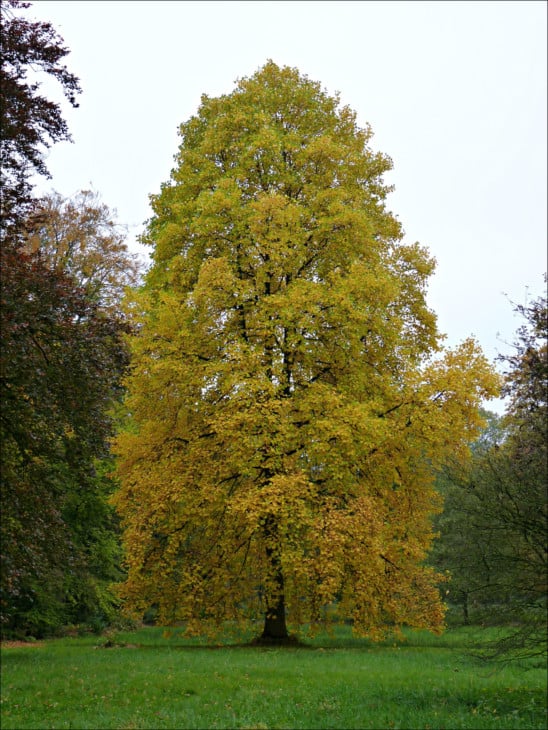
The Tulip tree is fast-growing, reaching up to 70 to 90 feet tall. It has bright green leaves that resemble tulip flowers, hence the name. The leaves turn yellow in autumn, and green-yellow flowers bloom in spring. The stems of this tree are aromatic. They are native to North America, particularly the US states of Massachusetts, Illinois, Rhode Island, Louisiana, and Florida.
14. Umbrella Magnolia (Magnolia tripetala)
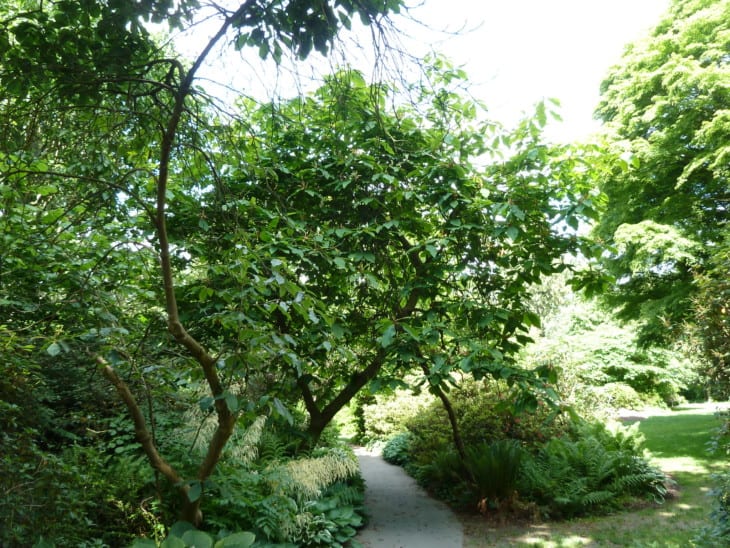
The Umbrella Magnolia is a 15- to 30-foot-tall tree that is indigenous to the southeastern United States and may be found all across the Appalachian Mountains. The umbrella-like leaves grow in bunches at the extremities of branches, resembling an umbrella. This species features large, brilliant spring blooms, rosy-red fruits, and smooth grey bark.
15. Katsura Tree (Cercidiphyllum)
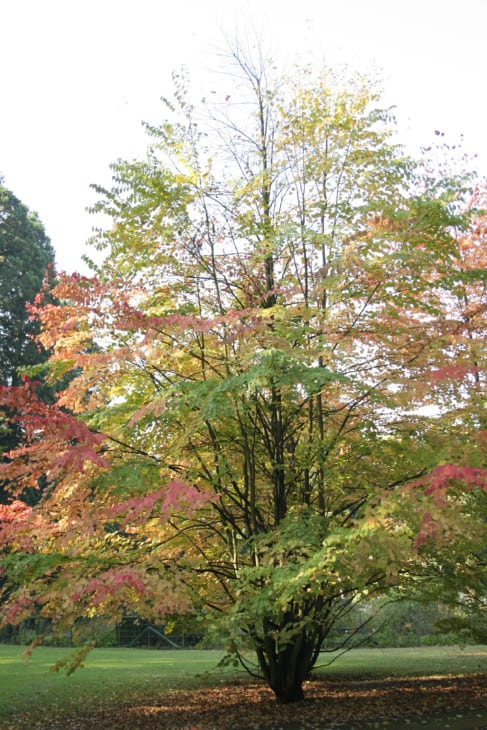
In Midwestern landscapes, the Katsura tree, a native of Japan, is a great specimen or shade tree. All year, its foliage displays a wide range of colors. Heart-shaped leaves appear reddish-purple in the spring and develop to a blue-green color. As the leaves turn a bright golden or apricot color in the fall, the color spectacle changes once more.
16. American Sycamore (Platanus occidentalis)
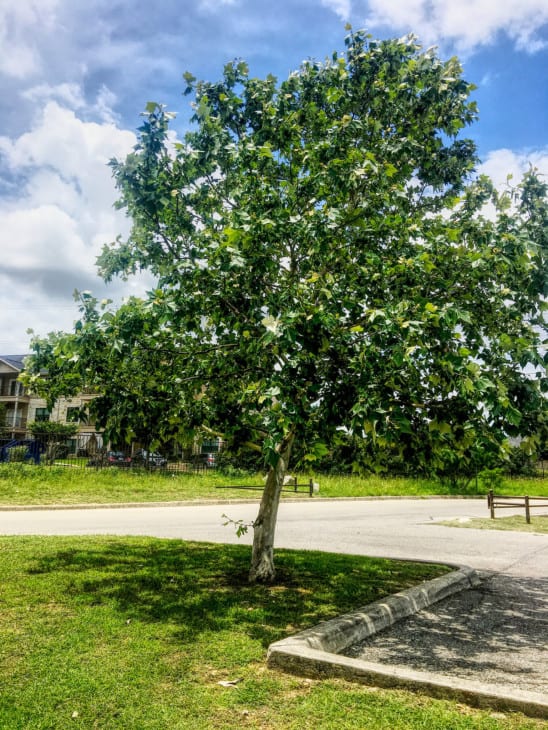
The speckled bark of an American sycamore tree distinguishes it from other trees by flaking off in enormous irregular clumps, leaving the top mottled and grey, greenish-white, and brownish. It can grow to be 90 to 130 feet tall, with sticky green buds on the leaves. It is also native to Maine, Nebraska, Texas, Florida, can be cultivated in North Dakota.
17. Witch hazel (Hamamelis virginiana)
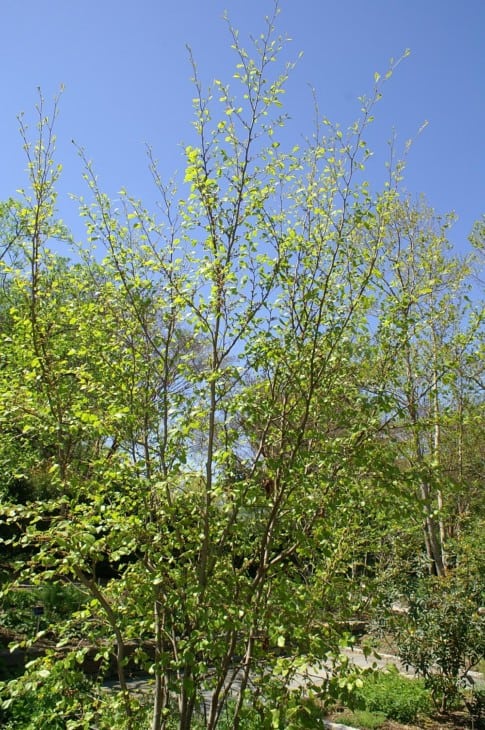
American Witch hazel is a tiny tree or shrub with arched branches that grows up to 20 to 30 feet tall. The underside of the dark green leaves is whitish. The tree’s fragrant flowers appear in fall and have four delicate white to bright yellow petals. From Nova Scotia to Minnesota, and south to central Florida and eastern Texas, this species is native to eastern North America.

